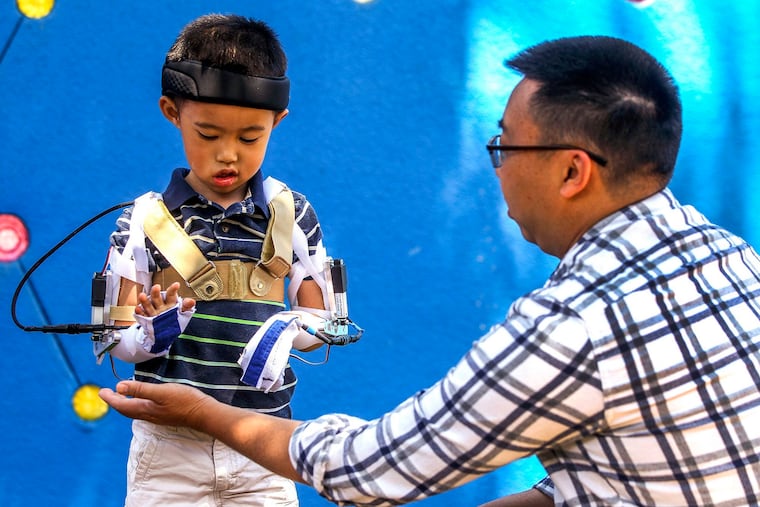Rare polio-like illness marked worst year ever in 2018, CDC says
A mysterious disease marked by muscle weakness or paralysis struck 233 people in 2018, most of them children — marking the worst year since the federal government started tracking the illness in 2014

A mysterious disease marked by muscle weakness or paralysis struck 233 people in 2018, most of them children — marking the worst year since the federal government started tracking the illness in 2014.
The number of confirmed cases of acute flaccid myelitis included 11 each in Pennsylvania and New Jersey. The year’s total was announced Tuesday by the U.S. Centers for Disease Control and Prevention.
The cause is thought to be a virus, leading to damage to the spinal cord, but much about the illness remains unclear, CDC physicians said in a conference call. A prime suspect is a type of enterovirus called D68, yet most people who become infected with it do not develop muscle weakness.
The disease has struck 11 people so far this year, the agency said. That number is not expected to go much higher, as the illness so far has followed a biannual pattern, spiking in 2014, 2016, and 2018.
That cycle supports the theory that a virus is the culprit, as the activity of some other viruses is known to follow a multiyear pattern, due to a combination of the seasonal climate that encourages transmission of various microbes and how fast they spread from person to person.
Of the 233 patients with acute flaccid myelitis in 2018, 98 percent were hospitalized, 60 percent spent time in an intensive care unit, and 27 percent needed machines to help them breathe, said Tom Clark, deputy director of the CDC’s division of viral diseases.
For older Americans, that last detail has evoked memories of polio, which paralyzed thousands of people each year in the early 1950s, some of whom needed a breathing machine called an iron lung.
But none of the patients with acute flaccid myelitis has tested positive for polio, Clark said. Polio was eradicated in the United States with a vaccine. No new cases have originated in the U.S. since 1979. Yet no vaccine is in development yet for acute flaccid myelitis, as researchers first want to be sure which virus leads to the disease and how.
The average age of patients with acute flaccid myelitis in 2018 was 5, though the illness was confirmed in a handful of adults.
Researchers are trying to determine why most children infected with the suspected viral culprit do not develop paralysis, suffering only a respiratory infection or fever. Clues may emerge from genetic testing and interviews with families, said Anne Schuchat, the CDC’s principal deputy director. In some cases, two children in the same family have become infected, but only one develops paralysis.
“Why not the sibling who also had the respiratory infection where we’re pretty sure this same virus was running around in the family?” Schuchat asked.
While this year is not expected to see a high number of cases, there may be a slight uptick in August and the fall, if previous years are any guide. Schuchat said awareness among doctors and nurses is key to prompt diagnosis and treatment. There is no cure, but evidence suggests that swift treatment with steroids improves outcomes.
Patients with severe muscle paralysis in the arms can regain some movement with a surgery called a nerve transfer, in which nerves are rerouted from elsewhere in the body. This procedure has been performed at both Children’s Hospital of Philadelphia and Shriners Hospital for Children in Philadelphia.
As late as Nov. 30, the CDC said the disease appeared to have peaked with 134 confirmed cases. The sharp jump to the final total of 233 cases in 2018 was not due to a surge in December, but to the confirmation of suspected cases that had occurred earlier in the year.